Bizarre Towering Pillars Of Externsteine: Myths, Legends And Sacred Rituals From Times Long Gone
AncientPages.com - Made of oddly twisted limestone rocks, Externsteine is located in the Teutoburg Forest north of the Rhine in Germany.
Externsteine is associated with heroic myths and legends about brave warriors of times long gone. Related to Scandinavian Eddas and Hitler’s persistent Aryan myth, the Teutonic cult center Externsteine, was also believed to be the site of the famous Yggdrasil - World Tree.
In the 1920s and 30s, the Nazi party used the Externsteine as the symbol of the German identity, but the history and importance of this sacred place goes much further back in time.
According to popular belief, the stones were placed there, at night by giants and they were there burned by the devil, which explains their grotesque and even scary appearance.
This spiritual sanctuary - with sharply outlined against the sky, uneven pillars, about 30 meters high - was once the subject of a fierce battle between the followers of pagan deities and the Christian monks.
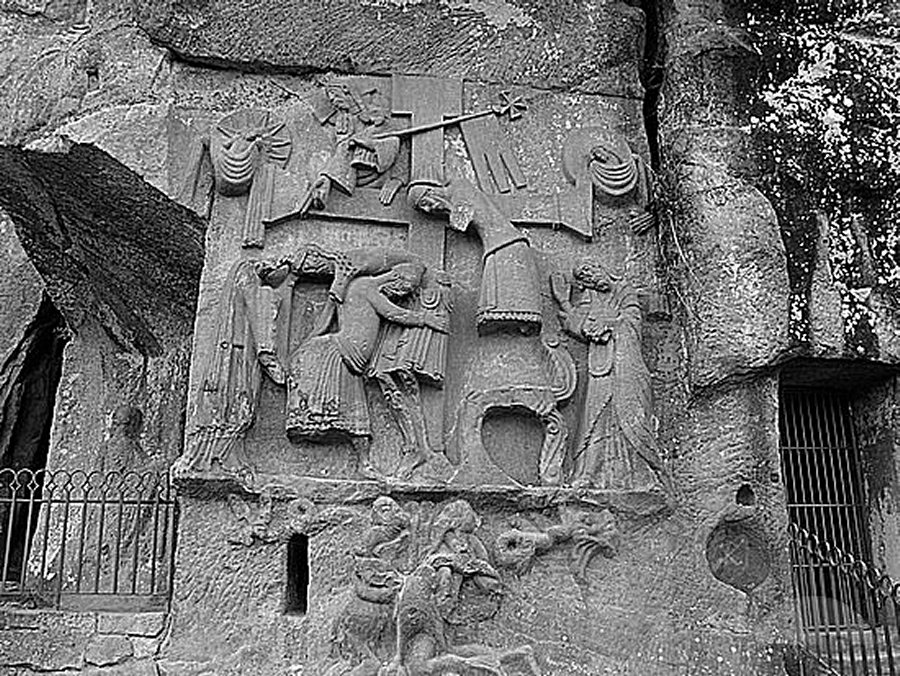
Externsteine - early Christian rock carving - "The descent from the Cross dated to about 9th century.
In the spiritual tradition of the Germanic people, Externsteine played an important role similar to that of Stonehenge in England.
The Teutoburg Forest is surrounded with many prehistoric secrets and so is Externsteine bizarre rocky cluster.
All that is known about this place, especially its origin and meaning, turned out to be deceptive and uncertain. One theory has it, the site was used to many performed in the Stone Age; another suggests its religious functions date back no further than the 12th century.
Amongst tall rock outcrops, there are seen strange appearances of human faces and, mysterious shapes of mythical dragon-like creatures, all apparently formed accidentally by the cracks, fissures and bulges of the rocks.
The Externsteine rocks are about 70-million-year-old sandstone spires with the remainsof a temple still recognizable on the top. This temple has definitely astronomical purpose because its rounded small windows slign with the sun and moon during the summer solstice.
According to astronomers, a part of the stones were used as an observatory.
There are also chambers, caverns and secret passages, later enlarged and modified by successive generations. There are niches, platforms and stairs leading to nowhere. No one can say, when the rocks were modified into the group of sanctuaries, tunnels and dead-end stairs.
In some of the chambers, researchers found several burn marks and dated to about 700 AD. About this time, the Externsteine was used by the non-Christian Teutonic people, but nothing is known about the motivation that brought these people to the site.
An opening in one of the chambers, is aligned to the midsummer sunrise, and on this particular morning, the sun’s rays directly illuminate a very ugly and mysterious face on the rear wall.
Many people who looked at this face, have a distinct feeling that the whole scenery has nothing to do with the medieval church and its activities but goes far back in time, many centuries before the Hellenistic Age had its beginnings.
While this curious face is unrecognizable, there are other features confirming that at the Externsteine, the ancient Celts once created an important sacred site and later, when the Celts left, the Teutonic people lived in the Teutoburg Forest; they added other features to the Externsteine.
Why is the place called "Externsteine"? No one knows; however, some researchers suggest it probably comes from the name of a neighboring mountainous area - "Egge", which means "the stone of Egge". There is also the first documented reference to this fascinating sacred place in old German texts dated to 1093 AD, which say it calls the "Agisterstein" - "the stone with the dragon cave".
Copyright © AncientPages.com All rights reserved. This material may not be published, broadcast, rewritten or redistributed in whole or part without the express written permission of AncientPages.com
Expand for referencesReferences:
A. Gazin-Schwartz, C.J. Holtorf, Archaeology and Folklore
A. Kaulins, Stars, Stones and Scholars
More From Ancient Pages
-
 On This Day In History: Johannes Kepler ‘Father Of Modern Astronomy’ Was Born – On Dec 27, 1571
News | Dec 27, 2016
On This Day In History: Johannes Kepler ‘Father Of Modern Astronomy’ Was Born – On Dec 27, 1571
News | Dec 27, 2016 -
 Crosby-Schøyen Codex: Ancient Coptic Manuscript Reveals Sermon That Spurred Violence Against Jews
Featured Stories | Jun 5, 2024
Crosby-Schøyen Codex: Ancient Coptic Manuscript Reveals Sermon That Spurred Violence Against Jews
Featured Stories | Jun 5, 2024 -
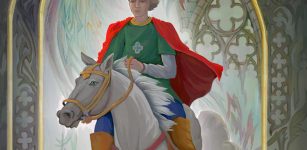 King Lud – Mysterious Founder Of London And His Connection To The Tuatha De Danann
Featured Stories | Oct 21, 2021
King Lud – Mysterious Founder Of London And His Connection To The Tuatha De Danann
Featured Stories | Oct 21, 2021 -
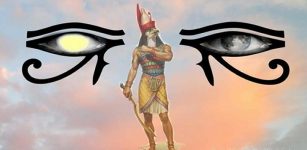 Horus – One Of The Most Important Ancient Egyptian Gods And Symbol Of Rulership and Justice
Egyptian Mythology | Jun 26, 2018
Horus – One Of The Most Important Ancient Egyptian Gods And Symbol Of Rulership and Justice
Egyptian Mythology | Jun 26, 2018 -
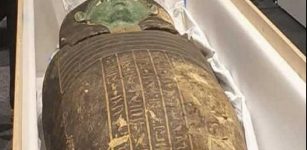 Egypt Recovers Ancient Wooden Coffin From Houston Museum In The US
Archaeology | Oct 4, 2022
Egypt Recovers Ancient Wooden Coffin From Houston Museum In The US
Archaeology | Oct 4, 2022 -
 Centuries-Old Hidden Tunnels Will Be A New Tourist Attraction In Turkey
Archaeology | Apr 27, 2020
Centuries-Old Hidden Tunnels Will Be A New Tourist Attraction In Turkey
Archaeology | Apr 27, 2020 -
 Statue Of Apollo Discovered in Ancient City Of Prusias ad Hypium, Turkey
Archaeology | Aug 26, 2022
Statue Of Apollo Discovered in Ancient City Of Prusias ad Hypium, Turkey
Archaeology | Aug 26, 2022 -
 Egyptian Blue: World’s Oldest Artificial Pigment
Ancient History Facts | Feb 6, 2016
Egyptian Blue: World’s Oldest Artificial Pigment
Ancient History Facts | Feb 6, 2016 -
 Unraveling The Mystery Of How Our Ancestors Created The First Spoken Words
Archaeology | Dec 6, 2021
Unraveling The Mystery Of How Our Ancestors Created The First Spoken Words
Archaeology | Dec 6, 2021 -
 Unique Medieval Perfectly Preserved Sword Found In The Odra River, Poland
Archaeology | Aug 12, 2020
Unique Medieval Perfectly Preserved Sword Found In The Odra River, Poland
Archaeology | Aug 12, 2020 -
 Researchers Sequenced 137 Human Genomes From The Middle East
Archaeology | Aug 6, 2021
Researchers Sequenced 137 Human Genomes From The Middle East
Archaeology | Aug 6, 2021 -
 Strange Community Rules Of Essenes Preserved In The Dead Sea Scrolls
Ancient History Facts | Jun 9, 2020
Strange Community Rules Of Essenes Preserved In The Dead Sea Scrolls
Ancient History Facts | Jun 9, 2020 -
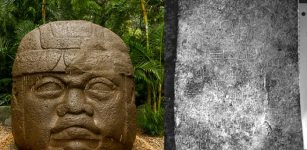 Mystery Of The Controversial Cascajal Block – Oldest Writing In The Americas
Artifacts | Oct 12, 2017
Mystery Of The Controversial Cascajal Block – Oldest Writing In The Americas
Artifacts | Oct 12, 2017 -
 Anu: Supreme Ruler Of The Heavenly Abode In Sumerian Pantheon Of Gods
Featured Stories | Jun 7, 2018
Anu: Supreme Ruler Of The Heavenly Abode In Sumerian Pantheon Of Gods
Featured Stories | Jun 7, 2018 -
 New Light On The Complex Evolution Of Our Feet
Evolution | Nov 22, 2023
New Light On The Complex Evolution Of Our Feet
Evolution | Nov 22, 2023 -
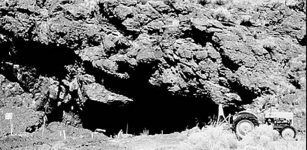 Archaeologists to revisit Fort Rock Cave, Oregon – site of the world’s oldest sandals
Artifacts | Aug 27, 2015
Archaeologists to revisit Fort Rock Cave, Oregon – site of the world’s oldest sandals
Artifacts | Aug 27, 2015 -
 Watlington Viking Hoard May Re-Write History Of England
Archaeology | Dec 11, 2015
Watlington Viking Hoard May Re-Write History Of England
Archaeology | Dec 11, 2015 -
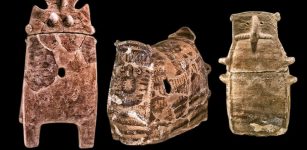 Blue Eyed People In Northern Israel 6,500 Years Ago: New DNA Results
Archaeology | Aug 22, 2018
Blue Eyed People In Northern Israel 6,500 Years Ago: New DNA Results
Archaeology | Aug 22, 2018 -
 Kap Dwa – Mysterious Two-Headed Mummified Patagonian Giant – Real Or Fake?
Featured Stories | May 20, 2021
Kap Dwa – Mysterious Two-Headed Mummified Patagonian Giant – Real Or Fake?
Featured Stories | May 20, 2021 -
 Oldest Indo-European Calendar Based On The Orion Constellation Is Engraved On A Vucedol Vessel
Artifacts | Jun 7, 2021
Oldest Indo-European Calendar Based On The Orion Constellation Is Engraved On A Vucedol Vessel
Artifacts | Jun 7, 2021




